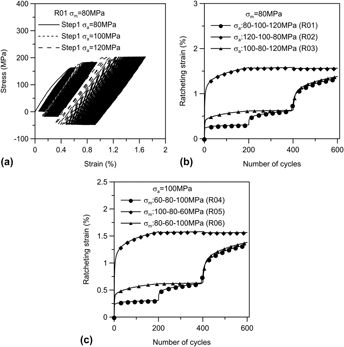Crossref Citations
This article has been cited by the following publications. This list is generated based on data provided by
Crossref.
Yang, Ke
Zhou, Changchun
Fan, Hongsong
Fan, Yujiang
Jiang, Qing
Song, Ping
Fan, Hongyuan
Chen, Yu
and
Zhang, Xingdong
2017.
Bio-Functional Design, Application and Trends in Metallic Biomaterials.
International Journal of Molecular Sciences,
Vol. 19,
Issue. 1,
p.
24.
Hu, Jiaqi
Gao, Hong
Meng, Yuxian
Zhang, Zhe
and
Gao, Lilan
2018.
Effects of free-end torsion on the microstructure evolution and fatigue properties in an extruded AZ31 rod.
Materials Science and Engineering: A,
Vol. 726,
Issue. ,
p.
215.
Li, Qite
Ye, Wenbo
Gao, Hong
and
Gao, Lilan
2019.
Improving the corrosion resistance of ZEK100 magnesium alloy by combining high-pressure torsion technology with hydroxyapatite coating.
Materials & Design,
Vol. 181,
Issue. ,
p.
107933.
Pahlevanpour, A.H.
Behravesh, S.B.
Adibnazari, S.
and
Jahed, H.
2019.
Characterization of anisotropic behaviour of ZK60 extrusion under stress-control condition and notes on fatigue modeling.
International Journal of Fatigue,
Vol. 127,
Issue. ,
p.
101.
Wang, Jun
Ferdowsi, Mahmoud Reza Ghandehari
Kada, Sitarama R.
Lynch, Peter A.
Wang, Zhiyang
Kimpton, Justin A.
and
Barnett, Matthew R.
2021.
Stress relaxations during cyclic loading-unloading in precipitation hardened Mg-4.5Zn.
Acta Materialia,
Vol. 205,
Issue. ,
p.
116531.
Hu, Jiaqi
Li, Qite
and
Gao, Hong
2021.
Influence of Twinning Texture on the Corrosion Fatigue Behavior of Extruded Magnesium Alloys.
Acta Metallurgica Sinica (English Letters),
Vol. 34,
Issue. 1,
p.
65.
GS, Duan
Chu, Yuhang
Song, Linghui
Guan, Ziwei
Zhou, Jixue
Wang, Ruochao
Du, Xinghao
BL, Wu
and
Esling, Claude
2022.
The Effect of Stress Amplitude on Ratcheting Strain Development in an Extruded Az31b Magnesium Alloy Under Different Mean Stresses.
SSRN Electronic Journal ,
Duan, G.S.
Chu, Y.H.
Song, L.H.
Guan, Z.W.
Zhou, J.X.
Wang, R.C.
Du, X.H.
Wu, B.L.
and
Esling, C.
2022.
The effect of stress amplitude on ratcheting strain development in an extruded AZ31B magnesium alloy under different mean stresses.
Materials Science and Engineering: A,
Vol. 860,
Issue. ,
p.
144226.
Duan, G.S.
Guan, Z.W.
Song, L.H.
Chu, Y.H.
Zhou, J.X.
Du, X.H.
Wu, B.L.
and
Esling, C.
2023.
Dual frequency domain characteristics of ratcheting behavior of AZ31B alloy under asymmetrically stress-controlled loading mode.
Materials Characterization,
Vol. 196,
Issue. ,
p.
112574.
Straumal, Boris
Khrapova, Natalya
Druzhinin, Aleksandr
Tsoy, Kristina
Davdian, Gregory
Orlov, Valery
Gerstein, Gregory
and
Straumal, Alexander
2023.
Grain Boundary Wetting Transition in the Mg-Based ZEK 100 Alloy.
Crystals,
Vol. 13,
Issue. 11,
p.
1538.
Xiong, Ying
and
He, Liuyong
2023.
Ratcheting behavior of surface‐modified AZ80 magnesium alloy after pre‐corrosion in simulated body fluids with various pH values.
Fatigue & Fracture of Engineering Materials & Structures,
Vol. 46,
Issue. 12,
p.
4729.
Straumal, Boris
Tsoy, Kristina
Druzhinin, Aleksandr
Orlov, Valery
Khrapova, Natalya
Davdian, Gregory
Gerstein, Gregory
and
Straumal, Alexander
2023.
Coexistence of Intermetallic Complexions and Bulk Particles in Grain Boundaries in the ZEK100 Alloy.
Metals,
Vol. 13,
Issue. 8,
p.
1407.
